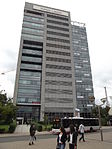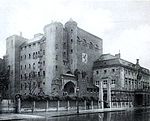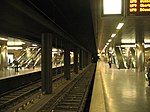Düsseldorf-Carlstadt

Carlstadt is a borough of Düsseldorf and belongs to the central District 1. It is in the south of the Old Town (Altstadt) and named after the Duke Carl-Theodor, who founded this borough. Carlstadt has an area of 0.46 km2 (0.18 sq mi). It is the smallest borough of Düsseldorf. Its economical life is mainly based on upper class shops. One of the three European central offices of Vodafone is in Carlstadt. The Heinrich Heine Institute and the Robert Schumann Society are in Carlstadt. Clara and Robert Schumann lived for a couple of years in Carlstadt. Well-known is the Carlsplatz, the central market place of Düsseldorf in Carlstadt. This article is based on a translation from the German Wikipedia.
Excerpt from the Wikipedia article Düsseldorf-Carlstadt (License: CC BY-SA 3.0, Authors, Images).Düsseldorf-Carlstadt
Am Dom, Bremen Mitte (Stadtbezirk Bremen-Mitte)
Geographical coordinates (GPS) Address Website Nearby Places Show on map
Geographical coordinates (GPS)
| Latitude | Longitude |
|---|---|
| N 51.222777777778 ° | E 6.7711111111111 ° |
Address
Turmbläser (Turmbläserbrunnen)
Am Dom
28195 Bremen, Mitte (Stadtbezirk Bremen-Mitte)
Bremen, Deutschland
Open on Google Maps






